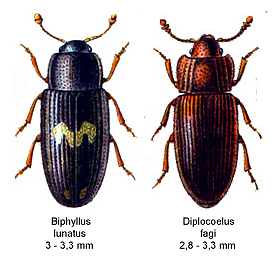
Endemism is the ecological state of a species being unique to a defined geographic location, such as an island, nation, country or other defined zone, or habitat type; organisms that are indigenous to a place are not endemic to it if they are also found elsewhere. The extreme opposite of endemism is cosmopolitan distribution. An alternative term for a species that is endemic is precinctive, which applies to species that are restricted to a defined geographical area.

The Dytiscidae – based on the Greek dytikos (δυτικός), "able to dive" – are the predaceous diving beetles, a family of water beetles. They occur in virtually any freshwater habitat around the world, but a few species live among leaf litter. The adults of most are between 1 and 2.5 cm (0.4–1.0 in) long, though much variation is seen between species. The European Dytiscus latissimus and Brazilian Megadytes ducalis are the largest, reaching up to 4.5 cm (1.8 in) and 4.75 cm (1.9 in) respectively. In contrast, the smallest is likely the Australian Limbodessus atypicali of subterranean waters, which only is about 0.9 mm (0.035 in) long. Most are dark brown, blackish, or dark olive in color with golden highlights in some subfamilies. They have short, but sharp mandibles. Immediately upon biting, they deliver digestive enzymes. The larvae are commonly known as water tigers. The family includes more than 4,000 described species in numerous genera.

Cucujoidea is a superfamily of beetles. They include many fungus beetles, as well as lady beetles. Also included are a diversity of lineages of "bark beetles" unrelated to the "true" bark beetles (Scolytinae), which are weevils.
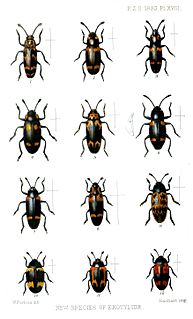
Erotylidae, or the pleasing fungus beetles, is a family of beetles containing over 100 genera. In the present circumscription, it includes the subfamilies Dacninae, Encaustinae, Erotylinae, Megalodacninae, and Tritominae. In other words, the narrowly circumscribed Erotylidae correspond to the subfamily Erotylinae in the definition sensu lato. They feed on plant and fungal matter; some are important pollinators, while a few have gained notoriety as pests of some significance. Sometimes, useful and harmful species are found in one genus, e.g. Pharaxonotha. Most pleasing fungus beetles, however, are inoffensive animals of little significance to humans.
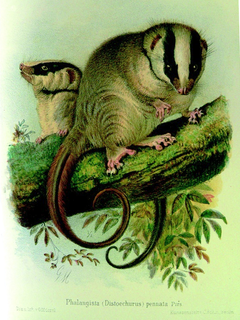
The feather-tailed possum is a species of marsupial in the family Acrobatidae. It is found in West Papua, Indonesia and Papua New Guinea. It is not to be confused with the feathertail glider, the only other species in the family Acrobatidae.
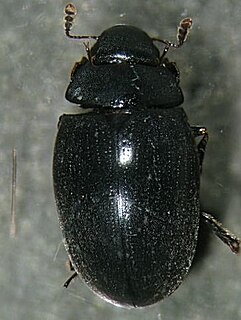
Nosodendridae is a family of beetles, with only 67 species in three genera:
Althaesia is a genus of beetles in the family Biphyllidae, containing the following species:
Anchorius lineatus is a species of beetle in the family Biphyllidae, the only species in the genus Anchorius.
Anobocaelus is a genus of beetles in the family Biphyllidae, containing the following species:
Biphyllus is a genus of beetles in the family Biphyllidae, containing the following species:
Diplocoelus is a genus of beetles in the family Biphyllidae, containing the following species:
Gonicoelus is a genus of beetles in the family Biphyllidae, containing the following species:
Monotomidae is a family of beetles in the suborder Polyphaga, containing the following genera:
Aneurops is a genus of beetles in the family Monotomidae, containing the following species:
Europs is a genus of beetles in the family Monotomidae, containing the following species:
Copelatus restrictus is a species of diving beetle. It is part of the genus Copelatus of the subfamily Copelatinae and the family Dytiscidae. It was described by Sharp in 1882.
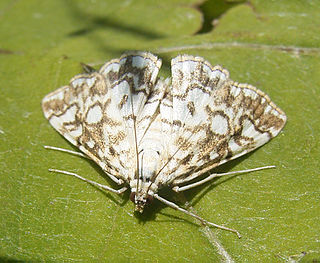
Acentropinae is a fairly small subfamily of the lepidopteran family Crambidae, the crambid snout moths. Species of this subfamily are exclusively found in wetlands and aquatic habitats.
Diplocoelus brunneus is a species of false skin beetle in the family Biphyllidae. It is found in North America.
Diplocoelus rudis is a species of false skin beetle in the family Biphyllidae. It is found in North America.

